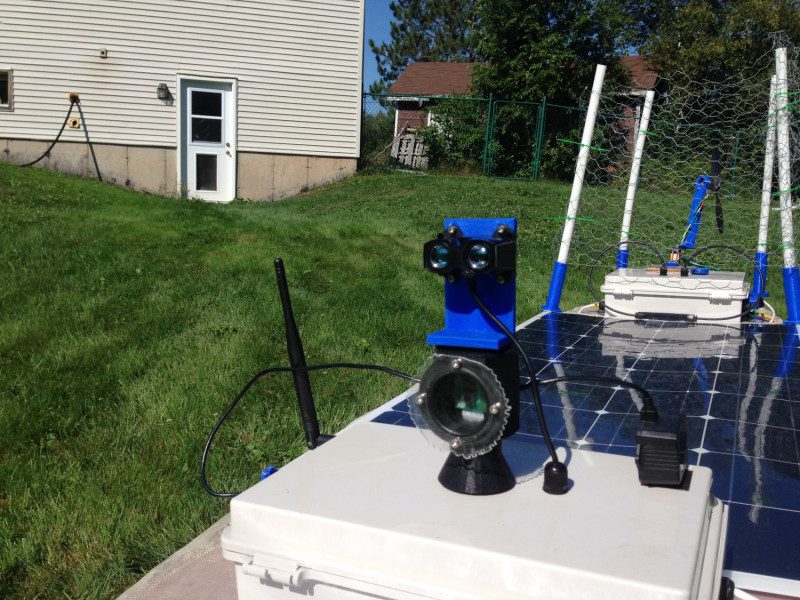“My project is named AMOS (Aquatic Mini Observation System),” Murray tells us. “It is a solar-powered, autonomous airboat for measuring water quality over large, distributed areas.”
Murray has worked on a couple of prototypes for the boat. The first one was made out of a kayak beer cooler (a small kayak that acts as a beer cooler) and had propellers that would end up getting gunked up. He also tested distance measuring with a Raspberry Pi Compute Module’s stereo vision before settling on a lidar module and a Raspberry Pi 3B+.
“During this past winter, I built a second prototype, this time using a longer surfboard-type design constructed from glued-together insulation foam that was given a coat of fibreglass to give it some added strength and stiffness,” Murray explains. “Instead of the water propellers, a single 10-inch drone propeller and motor were used and connected to a small waterproof servo motor at the stern end of the boat. This design was lighter (about 13 kg) and longer, and although the air propeller only produced about a tenth of the thrust provided by the dual water propellers, the improved draft and hydrodynamic shape made it slightly faster in the water.”
A Raspberry Pi controls the speed and angle of the air propeller, takes sensor readings from the water, interacts with the lidar module, and has several other functions so that it knows its speed and heading.
“I’m hoping that AMOS will be used for water testing by environmental services companies, and industrial customers such as mine operators that may be required by law to confirm that pollution limits in bodies of water surrounding their operations are not exceeded,” Murray reveals. “I’m hoping also to be able to offer it at an attractive price point, with modular components so that researchers or robotic boat enthusiasts could also use it, or some subset of it, in their own projects.”
Major tests
The prototypes aren’t just proofs of concept, either: they’re fully functioning test beds, as Murray explains: “Approximately 150 km of testing has been completed on the second AMOS prototype in 2019. It can work well in shallow water (as little as 2 cm depth) and can travel through regions of water with lots of grass or other vegetation without any worries about getting stuck. Its airboat design works best under conditions of low wind (less than 20 km/h) and it can travel at a top speed of about 2.7 knots (5 km/h). Provided the sun is shining on a clear day and higher than about 40 degrees in the sky, AMOS can run at top speed without depleting the charge of its battery.”
Murray plans for AMOS to be on sale in the summer, so you don’t have too long to wait.



Schreibe einen Kommentar
Du musst angemeldet sein, um einen Kommentar abzugeben.